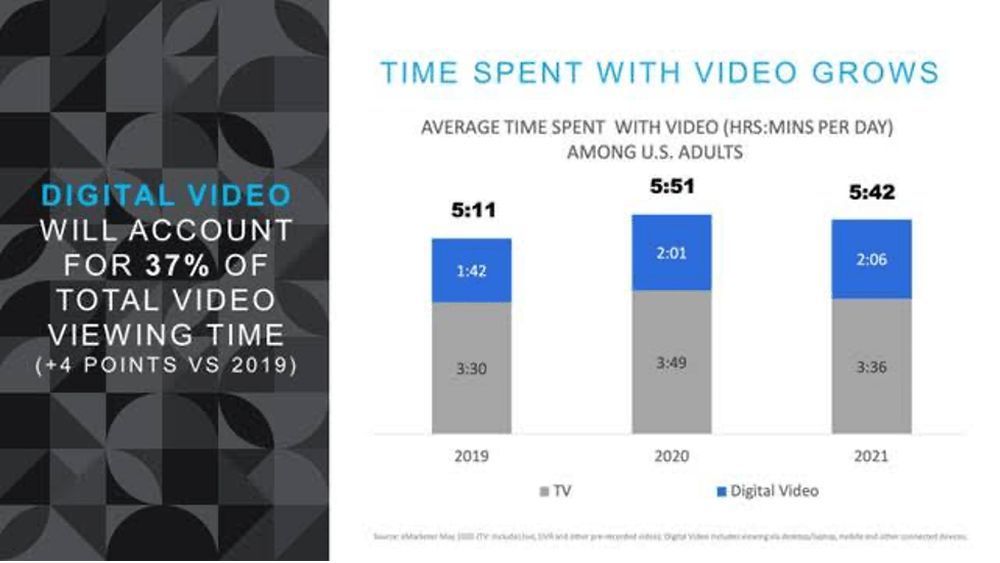Streaming has become increasingly popular as more people rely on online platforms to access video content. In a 2020 survey, 62% of U.S. households had a streaming service subscription, such as Hulu, Netflix, or Amazon Prime.

This rise in video streaming — and in the amount of time consumers spend watching digital videos — has created a new marketing medium called OTT, which stands for over-the-top. But what does OTT mean for marketers?
What Is OTT Marketing?
OTT marketing is content delivered directly to consumers through various internet streaming devices or TVs. It's "over-the-top" because it allows brands to reach consumers without going through traditional TV providers. Consumers experience OTT advertising when using connected TVs, mobile devices, streaming devices, and FEPs (full-episode players). FEPs show professionally produced, TV-like content — typically 22 minutes or longer with commercial breaks — that can appear on any device, across apps and web browsers.
OTT advertising is relatively new and often reaches niche audiences. Once marketers understand the basics of OTT advertising, they can use it to gain more traction with viewers.
The Benefits of OTT Advertising
OTT advertising drives brand engagement in unique ways. OTT ads are often the best way to move consumers through the exploration and evaluation stages of the customer journey because of their use of high-quality sound and visuals that appeal to viewers' emotions.
Plus, OTT ads can increase your reach and frequency when paired with broadcast TV ads. With OTT, people customize their viewing experiences within multiple streaming channels; this makes it easy for marketers to position targeted ads that complement their broadcast ad schedules. The fact that audiences often access streaming services across several digital devices also gives marketers more opportunities to make an impact. Advertising on these channels increases engagement naturally because audiences are already tuned in.
Today, brands must break through the noise of traditional advertising to reach their audiences. That's why OTT advertising is so beneficial — it provides content that resonates with consumers on their favorite channels. Most brands realize the importance of this strategy, as digital video is expected to account for 40% of all video ad spending in 2021.

Short-Form vs. Long-Form Video
OTT video marketing is not a one-size-fits-all situation, so brands must first consider the different types of video before deciding which is right for their message. Most notably, the differences between short-form and long-form videos should be taken into account.
Short-form videos are less than 10 minutes — which means long-form videos are anything longer than 10 minutes. When and how an ad appears usually determines its effectiveness, and context determines whether ads appear in long-form or short-form videos. Short-form videos — including pre-roll video, Snapchat content, Instagram Stories, and TikTok posts — are more easily digestible and therefore have higher completion rates. Branded long-form videos are best suited to engage consumers and increase brand awareness, and they include webinars, Q&A sessions, and YouTube videos.
Many advertisers note different click-through and video completion rates (VCR) when measuring the effectiveness of short-form versus long-form video. A high VCR, the rate at which people view the full length of your video, means that your audience spent more time absorbing your message and results in a lower cost-per-view. If traffic to your site is more important than a high VCR or completed view, short-form video often works best. If you want to engage and entertain customers with your unique brand story, long-form is the way to go. Even better, a combination of the two video formats can maximize your reach and results.
Both short- and long-form videos offer compelling ways to reach audiences, but no one knows your brand's marketing goals better than you. You should certainly consider length when determining which type of video to use, but you also need to let the campaign's goal drive your decision.
OTT Advertising Tips
OTT video marketing gives audiences a chance to experience your brand in a unique way — no matter which format is used. Remember, viewers engage with content that speaks to them. Here are a few tips to ensure your OTT ads strike the right chord with consumers:
- Create content people care about. Gain insight into an audience's needs and deliver videos that meet those needs. Viewers have problems that need to be solved — use video to position your brand as the solution.
- Make videos stand out. When developing OTT ads, consider how to best engage viewers at the beginning of each video. Videos should make an impression to help viewers remember your brand long after the video ad ends.
- Give viewers something to do. Target your audience with videos that push them toward a decision. Every video should have an implicit call to action, such as visiting your website, following you on social media, or making a purchase.

This year has seen tremendous consumer shift to streaming services. And connected TV video ad spending reflects that trend. In 2021, it is expected to reach $11.1 billion, an annual increase of 42.6%.
OTT video marketing allows you to reach multiple audiences across streaming platforms. It increases brand engagement and opens an organic avenue for brand storytelling. With the right strategy, targeting, and video format, marketers can leverage OTT ads to cut through a noisy digital landscape, create meaningful experiences for viewers, and engage consumers visually and emotionally through impactful storytelling — storytelling that will influence them to take action.
Contact CMG Local Solutions today to learn how we can help you create the most effective OTT marketing campaign to meet your desired business goals.







